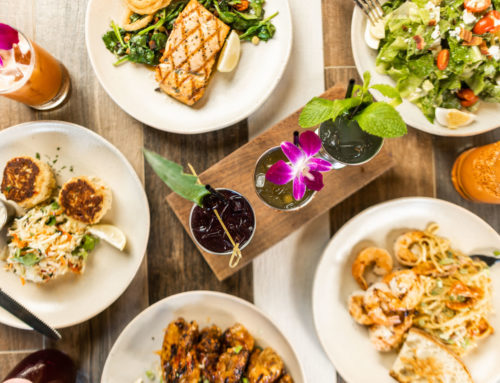When Andy Stasio was running a hamburger restaurant, he noticed something odd. Every time his manager ordered less expensive ground beef, his costs went down. But the store never made any money, because every time the costs went down, so did sales.
“And that’s when I discovered that you can’t ever underestimate the intelligence of your customers,” says Stasio, who today owns Slider and Blues at Hillcrest Road and Northwest Highway – and who has been around the pizza business for almost as long as there has been one.
“They know what you’re doing. They may not tell you, but they know. They want the best you can give them, and if you don’t do that, they’ll stop coming.”
Stasio has discovered a lot in almost five decades in the restaurant business. Today, at 82, he is in semi-retirement, which means he runs just two Slider and Blues restaurants (the other is in Plano), named after his hunting dogs. That seems like taking it easy because he’s the man who once helped to bring Big Boy to Texas, built 70 Church’s Fried Chicken restaurants in the state, and put 55 Shakey’s Pizza restaurants in the Southwest, all but inventing franchised pizza in the region.
“That’s the thing about Andy,” says Macky Sellers, a long-time friend who was Stasio’s partner in Shakey’s in San Antonio in the 1960s.
“He has always been very innovative, When we ran Shakey’s, he refined the birthday club promotion so well we had 50,000 kids under 12 in San Antonio signed up.”
In fact, talk to Stasio today, and he’s focused not on what he has done in the past, but on what he can do in the future.
Slider and Blues was designed to meet what he thinks customers will want over the next couple of years – a place for the family to have dinner. That’s why there is a game room for kids, and why the menu includes hamburgers, pasta dishes, grilled chicken and salads in addition to pizza.
“I think the demand is going to be for more neighborhood-type pizza places,” Stasio says. “Slider and Blues is the kind of place where the parents can take the kids, and where mom can have a salad, and dad can have a beer.”
Stasio is so convinced that he has discovered the next great concept that he has a plan sketched out – a franchise modeled on the old Chicken Delight, featuring a menu designed to appeal to everyone in the family, and emphasizing delivery.
“If I was a little younger,” he says, “it’s something I’d start working on right away.”
That those ideas aren’t currently in favor in the pizza business bothers him not a bit. Stasio has always been willing to take chances, as long as he did his homework and saw a reason to act.
That’s why he got out of Shakey’s in the late 1970s, when he couldn’t convince anyone at the company it was time to upgrade the menu and include such then-radical items as a salad bar. That’s why he left Church’s in the late 1980s, when he saw that the future for franchise chicken had to include more than the company’s traditional one-piece dinner.
“Things change,” he says. “If you don’t change with them, you don’t stay in business. If you want to stay in business, you have to adapt. Just because something was good 10 years ago doesn’t mean it is good now.”
That flexibility is just one part of Stasio’s recipe for success. He says several other things play key roles:
- Hard work – and then some more hard work. “You have to dedicate yourself to the job,” he says. “You have to be able to justify to yourself working 60 hours a week, often at the expense of your family. You have to resign yourself to not taking vacations, to working when everyone else is off and enjoying themselves.”
- Education. You can never learn too much, he days. Take night classes in restaurant and hotel management. Read the trade press. Visit other restaurants, not only to see what they’re doing, but to see what they’re doing better than you. Keep track of trends – what’s hot, and what’s not.
- Marketing. “You have to spend your marketing dollars wisely,” he says, “and the less you have, the wiser you have to spend it.” One of the wisest, he has found, is donating gift certificates to neighborhood groups. Not only does the donation give the store a good image in the community, but the math never fails him: a $10 gift certificate can turn over as much as 10 times in new business.
And yet, as important as all of this is, none of it would mean much without paying attention to the customer. It’s the same philosophy Stasio learned courtesy of his penny-pinching hamburger manager.
“The hardest thing for anyone in the food industry to accept is that the customer is always right,” he says. “They have to learn to accept that, no matter what.
“If the customer says the pizza is burned, the pizza is burned. Don’t argue with them. Take it back, and give them another one. That only costs you $10. And angry customer costs you much more than that.
“You have to remember that when they walk in your front door, they’re your guest, and you need to please them just as if they were in your home.”
That’s an approach, Stasio says, that never becomes dated.






